Urban gardens in the District of Latina – Madrid
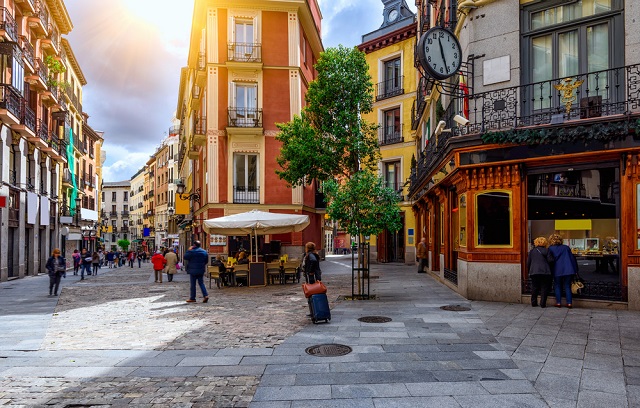
Hello again Farmers! After talking about the orchards of Carabanchel and Villaverde, today we will talk about the urban orchards in the Latin District of Madrid, which should not be confused with the Barrio de La Latina in the Centro district also of Madrid. At present, and to a certain extent due to this coincidence, the term has a much more administrative than popular use. The population tends to identify this district with the name of Aluche, as this is the name of the best-known neighborhood located in the center of the district.
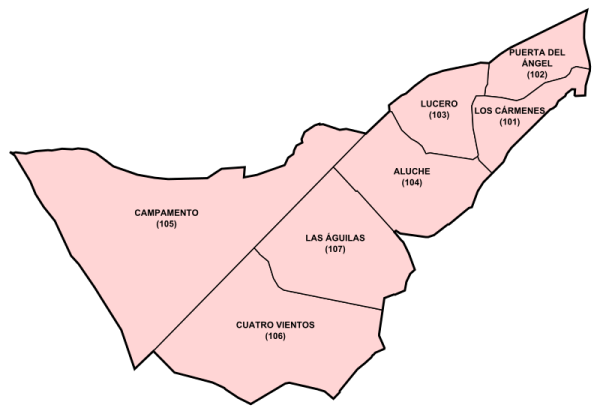
The district is located to the southwest of the city of Madrid, it runs parallel to the Extremadura highway that separates it from the Casa de Campo. It limits with the districts of: Carabanchel, Arganzuela, Centro and Moncloa-Aravaca.
It is the 10th district of the city of Madrid and is administratively distributed in the neighborhoods of Los Cármenes, Puerta del Ángel, Lucero, Aluche, Campamento, Cuatro Vientos and Las Águilas, in which we find several urban gardens that we will talk about next..
URBAN ORCHARDS IN THE LATINA DISTRICT
- Community Garden of the Barrio de Lucero: The idea of creating this garden arose from the need to seek a common goal in the Community Meeting Space, and it was thought that organic farming would be the ideal activity. The neighbors and neighbors have been enjoying their harvests since 2010 and work to publicize the initiative to schools and senior centers in the neighborhood. It is located on Hurtún Pascual street, on the corner of Carlos Fuentes street.
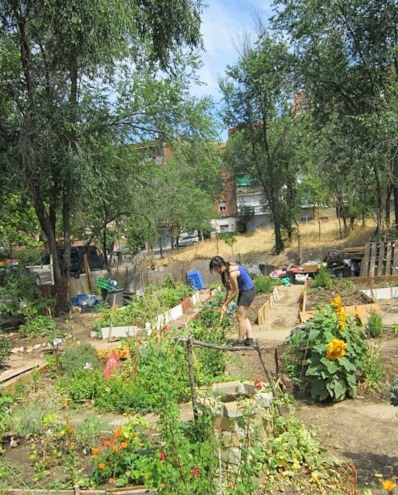
- Huerto de Las Águilas: Inaugurated in 2010, the Las Águilas Neighborhood Association’s orchard is located on Calle del General Romero Basart, on the corner of Calle de la Vidauba. The site is classified as a green area, although initially there were only two elm trees, advertising signs and it was in a state of abandonment, so the association decided to convert it to give it a better use. The garden is open to anyone who wants to participate in this initiative in order to produce healthy food, promote environmental awareness and have a good time in the company of other neighbors.
- Huerto de Batán: A group of neighbors and the AV El Batán decided to recover a parcel of municipal property and of use classified as «green space» that, for years, was abandoned becoming a garbage dump. It is located in the area known as Sur-Batán, behind the sports courts located between Sanchorreja, Alverja and Paseo de Extremadura streets. The Batán orchard is, above all, a collective act, a project created every day by all those who share this citizen initiative.
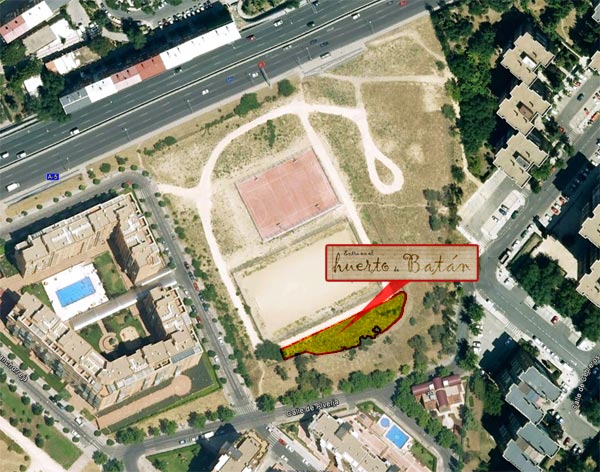
- Ecological garden of the Association of Health and Mutual Help (ASAM): ASAM, is a private non-profit entity registered in the Registry of Associations of the Community of Madrid and declared of public utility that promotes associations to achieve greater awareness and end the stigma and social rejection that people with mental illnesses still suffer today. For these tasks they gather the efforts of their own families, workers, volunteers and people with mental illness. One of the activities carried out in the association is the care of an ecological garden in which the boys and girls of ASAM work.that sends a great satisfaction for them to see how, what they have been investing time and effort in, bears fruit.
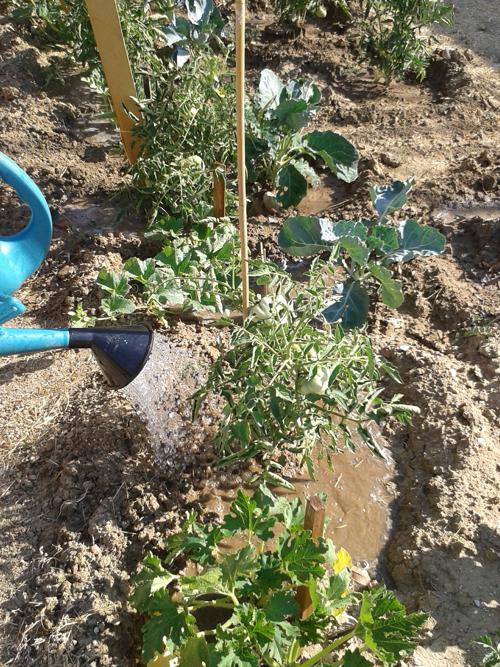
SCHOOL ORCHARDS IN THE LATINA DISTRICT
As you know, in Madrid there is a Network of Ecological School Gardens, to which the following study centers of the District of Latina belong:
- CEIP Mayor of Móstoles (Las Águilas neighborhood)
- CEIP City of Badajoz (Las Águilas neighborhood)
- CEIP Manuel Bartolomé Cossío (Las Águilas neighborhood)
- El Carmelo Teresiano School (Las Águilas neighborhood)
- Maria de Molina Secondary School (Las Águilas neighborhood)
- CEIP La Dehesa del Príncipe (Campsite neighborhood)
- CEIP Our Lady of Lucero (Lucero neighborhood)
- CEIP Bolivia (Lucero neighborhood)
- Lourdes School (Lucero neighborhood)
- CEIP Joaquín Dicenta (Puerta del Ángel neighborhood)
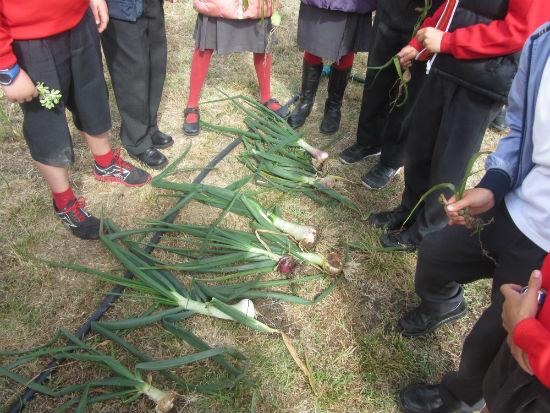
In these schools, the organic garden serves as an educational tool to teach students where the food they eat every day comes from and stimulate concern for the environment and the importance of sustainability for the conservation of the planet.
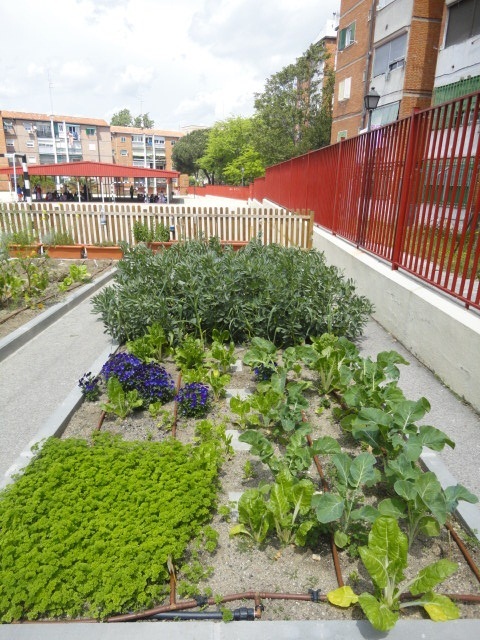
This is all for today Agrohuertistas. You know, if you know any of these orchards or think that I have left one in the inkwell, do not hesitate to comment. See you soon!

![Photo of Differences between powdery mildew and mildew: [Effects, Propagation and Treatments]](https://www.complete-gardening.com/wp-content/uploads/2022/08/differences-between-powdery-mildew-and-mildew-effects-propagation-and-treatments-390x220.jpg)
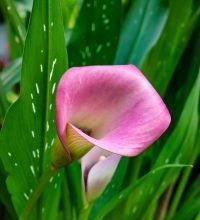
![Photo of The Gerbera: [Care, Planting, Irrigation, Light and Substrate]](https://www.complete-gardening.com/wp-content/uploads/2022/08/the-gerbera-care-planting-irrigation-light-and-substrate-390x220.jpg)
![Photo of Prune a Mandarin: [Importance, Time, Tools, Considerations and Steps]](https://www.complete-gardening.com/wp-content/uploads/2022/08/prune-a-mandarin-importance-time-tools-considerations-and-steps-390x220.jpg)